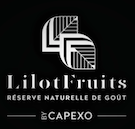The campaign of Mediterranean avocados is now coming to an end. In the current context of deficit production, the season went rather well in terms of price and sales flow. “All winter productions were in deficit this year, except for the Colombian and Mexican origins, but this did not compensate for the lack of production in Spain and Israel,” explains François Bellivier, development manager at Capexo.
The supply continues to decrease with the arrival of the last Mediterranean fruit of the season. “We are in a transition period with a shrinking supply. The Mediterranean origins will still be available for another two weeks. Then, Peru will take over from early May to late August (between week 19 and 35), with very large volumes again this year. The total production should reach 70,000 tons more than last year and exports to Europe are estimated to be 7% higher than last year (+7%). But since the American market is likely to be complicated this year due to a large Mexican production, this figure is likely to be revised upwards. Meanwhile, in this context of a supply deficit, the market promises to be good and rising over the next four/five weeks.”
After this transition period, however, the market might remain high with an expanding supply early in the season. “The market went up because of the shortage of supply, not because of increased consumption. The risk is that prices will remain high as the large volumes from Peru start arriving on the market. In this case, the product will become unattractive to consumers, since it will be expensive for an early season fruit that has not yet reached optimal maturity. On the other hand, an attractive market also attracts the interest of some exporters regardless of the quality of the products. This leads to a slowdown in consumption, and in this case, there is a risk that the market will collapse.”
With the increase in production volumes from Peru, as well as from Kenya, Colombia and South Africa, the success of the upcoming season will depend on consumption. “Peru had a very bad season last year, so they are now relying on distributors to promote the product all summer. However, this will be a recurrent issue in a context where the global production continues to increase year after year, with a market that is polarized between the United States and Europe.”
For more information: 
François Bellivier
Capexo
Phone: +33 1 41 73 23 00
Mobile: +33 6 75 03 76 54
f.bellivier@capexo.fr
www.capexo.fr
